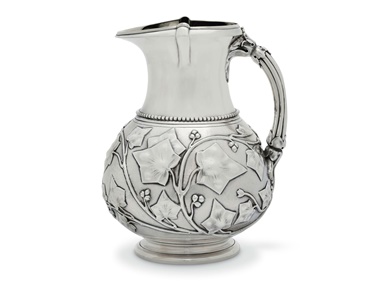"How can I tell if my flatware is sterling or ... This is our most ... ... If it doesn't have the word ... then it most likely is not sterling silver. The word "s
"How can I tell if my flatware is sterling or silverplated?" This is our most frequently-asked question. If it doesn't have the word "sterling", then it most likely is not sterling silver. The word "sterling" is found on American silver dating after 1860. Early American silver is very rare and was usually marked with only the maker's name or initials. Silverplate has the maker or company name and often includes terms such as "A1" or "quadruple plate". These are various descriptions of the amount of applied silver.
Whether you choose to collect sterling or silverplate, the following tips apply.
Choose a Style, Era or Maker. Reflect upon your lifestyle and personal taste, then make choices that will be a good fit. There are many specialty areas of silver collecting. Some collectors are devoted to a pattern while others collect a particular maker or era. Some only collect a particular type of piece, such as fish servers or tea strainers, and many expand into all areas.
Mix-n-Match. The mixing and matching of patterns has great aesthetic appeal on any table. This is a wonderful option particularly with hard-to-find, discontinued flatware patterns and is often a must for affordable entertaining.
Wear or Damage. Signs of use do not necessarily detract from value while damage may or may not. Slight damage on a rare flatware or hollow ware piece will not significantly reduce value, if at all. Be wary of buying tarnished silver as it can hide otherwise obvious wear, damage or repair. The price of a tarnished piece should be signficantly lower than retail because the true condition of a tarnished piece is unknown.
Monograms. Many collectors view the old, elaborate monograms as a lost art form and historically important. It does not detract from the desirability or value of a piece. If the pieces you collect are readily available without monograms, they are, in this case, more valuable if they do not or never had one. Monogram removal can damage a piece and is, in most cases, easily detectable.
Authenticity. Some collectors frown upon pieces that have been updated, such as replaced knife blades. Silverplated blades are often found with wear. They can easily be replaced on hollow handle knives and some prefer to have them replaced with stainless steel blades. However, stainless steel was not introduced until the early 1920s. This is one of those areas which is a matter of personal collecting preference.
Repair. Dents, disposal or other damage can be repaired by a silversmith. Pieces can also be replated. The cost is prohibitive for easily-found pieces but is worthwhile and economically feasible for the rare pieces.
Modified Items. Be aware that these exist and learn how to determine if a piece has been modified from its original state. Common flatware pieces are sometimes altered to make them appear to be rare or more valuable pieces. For example, spoons are sometimes cut to resemble ice cream forks. A sugar spoon may have been pierced to resemble a sugar sifter. Avoid purchasing modified pieces for your collection.
Forgeries. New forgeries in popular and rare patterns appear regularly for sale on the internet. In particular, salt spoons and rare pieces such as asparagus servers. Many of these pieces have no maker's marks and some have been recently reproduced. Further, forged maker's marks in silver have appeared for hundreds of years. The age of a piece does not necessarily indicate it's authenticity.
Educate Yourself. Many good silver books are available in the collecting section of your local book store or library..jpg?w=780)

Tidak ada komentar:
Posting Komentar